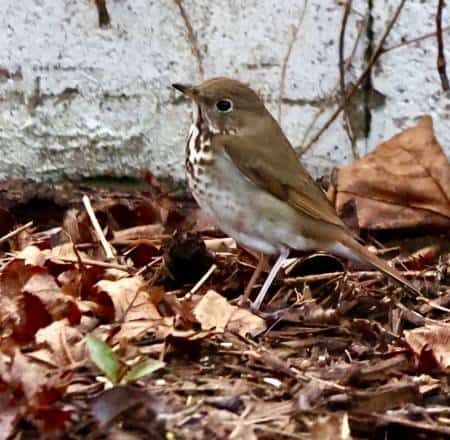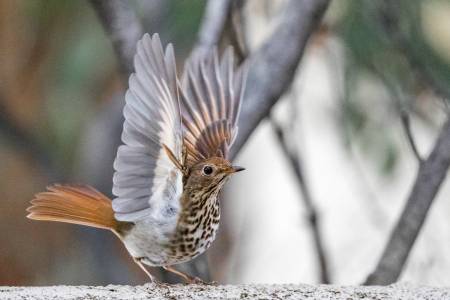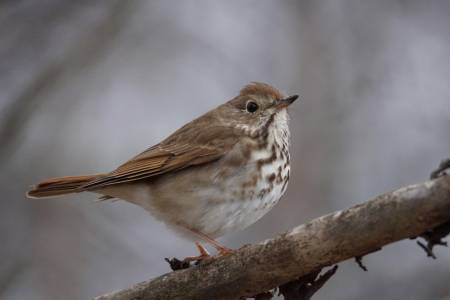
Unpretentious? Yes, I think that’s it. I think that may be the best word to describe the hermit thrush. That little fellow, who, unlike his other thrush cousins, decides he just doesn’t want to migrate any further south. “No thank you, I think I’ll stay right here. The cold doesn’t really bother me.”
What a funny little fellow he is. And how beautiful – in a drab and elegant way. The reddish-brown of the tail. The olive-drab of the back and the slight, sometimes barely noticeable, dark streaks or smudges on the breast. Not a particularly colorful bird, but a beauty nonetheless.
The hermit thrush (Catharus guttatus) is one of several species of spotted thrushes in the eastern U.S. But unlike his cousins, the hermit thrush is the only spotted thrush that we will see on the Eastern Shore in the winter. Other thrushes, like the wood thrush, the gray-cheeked thrush and the very head for the warmer climes of Central America in winter.

You don’t have to look up into the trees to find him. He’s usually at eye level or lower. Typically, in woody or brushy areas where he can search for insects or berries. And you’ll also notice a bit of tail bopping. Usually, he’ll stay fairly still, perched on a branch close to

the ground, and will give you the opportunity for a good long look.
But you won’t see him in the summer. Not around these parts. By spring he’s headed back to the northern woodlands and boreal forests where he’ll breed until the diminishing daylight lets him know it’s time to head south again. If you go looking for him this time of the year, keep watch for that slight movement in the corner of your eye. They’re not gregarious like wrens and they won’t make a lot of noise or movement. They’re a bit stealth. But they are out there and they’re fairly common. You just need to be a little stealth yourself to find them. Good luck.
About the Author
Kevin Smith is the Executive Director of the Maryland Coastal Bays Program. As Executive Director, Kevin handles the primary responsibilities of organizational management. Kevin joined the MCBP after spending 34 years at the Maryland Department of Natural Resources. He spent most of his career in the field of aquatic and habitat restoration—much of it on Maryland’s Eastern Shore. Kevin graduated from the University of Maryland with degrees in Resource Conservation and Fish and Wildlife Management.

